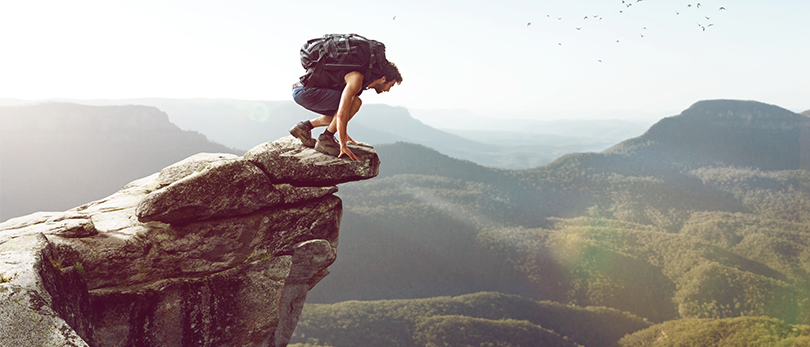What is meant by acrophobia, the fear of heights?
Have you ever wondered whether you suffer from acrophobia outside of situations where you are actually exposed to heights? Feeling your hands get clammy, hearing your breathing and heart speed up are not necessarily signs of a phobia. Anyone can experience these sensations, it is a normal phenomenon that can be managed with habit. So what is the cause of this acrophobia?

Fear of heights, one of the most common phobias
Acrophobia comes from the Greek word akron (peak) and phobos (fear). It is one of the most common and prevalent phobias, affecting twice as many women as men. It is a psychological disorder that differs from vertigo, which is caused by a malfunction of a sensory organ in the inner ear (more precisely called the vestibular system). The vestibular system contributes to the sensation of movement and to our balance. When the vestibular system is impaired, dizziness can occur both when lying in bed and when walking down the street.
If you are acrophobic, you may not have an inner ear disorder, but you have a totally uncontrollable panic fear and an irrepressible need to get off when exposed to heights. The mere idea of having to go to the 10th floor of a building, to cross a precipice or to walk on top of a skyscraper can trigger an anxiety attack. For you, the dimensions of height are usually over-represented and amplified. Crossing a height difference of a few metres will be experienced as a much more dangerous situation than it really is. The notion of elevation is greatly increased even at low heights. The phobia is revealed when you also put in place avoidance strategies to avoid having to confront all these difficulties. At this stage, acrophobia generates a real handicap and prevents you from living your life fully.
Acrophobia, an irrational fear that spoils everyday life
According to some researchers, acrophobia was initially a form of internal disposition that favoured the survival of the species. It is thought to have been an effective way of adapting to the environment and coping with the many dangers of falling that people faced thousands of years ago.
Today, however, acrophobia is universally referred to as the irrational fear that prevents you from carrying out everyday activities. Simply having a drink with friends on a balcony or going for a hike in the mountains are unthinkable. Jobs that require you to work at heights (bricklayers, crane operators, wireline technicians, etc.) are also off your list and force you to choose another activity.
Many people suffering from acrophobia do not think of consulting a health professional because they have often learned to live with their difficulties. It is relatively easy for them to find a solution that allows them not to face the problem. For example, they prefer to take the stairs rather than transparent lifts, choose to take a longer path rather than cross a suspension bridge, etc.
Finally, it is important to know that there are almost as many ways of experiencing the fear of heights as there are acrophobics. It is therefore important for the health professional to identify precisely the situations and particular moments that trigger your anxiety. It is quite possible that a person can go to the top of a building but is unable to climb a stepladder a few centimetres above the ground. It depends on the individual’s representation and it may take some time before you can clearly identify these situations.
Typical anxiety-provoking situations for acrophobics
Although acrophobia can manifest itself in very different ways in different individuals, there are a number of cases to which acrophobic people seem to be particularly susceptible. First of all, they are unable to go to the top of a hill or mountain and have great difficulty in climbing to the top of buildings of any height. They also say that they are very anxious about standing near the edge, whether it is a bridge or an underground platform, for example. These situations are deeply problematic for them because people with acrophobia imagine that they will fall at any moment, seriously injure themselves and even die in most cases. This fear is often so intense that it can cause physical sensations of falling even though the individual is actually safe. It can, therefore, expose one to real risks that are not intrinsic to the situation but can then cause real falls.
Another aspect of the fear of heights is often mentioned by sufferers. They say that they feel an almost irrepressible urge to jump into the void when they are close to the edge of the surface they are standing on. This feeling is sometimes described as an external force drawing them towards the void. As a direct consequence of such feelings, the acrophobic person gradually loses confidence in their ability to control their reactions in the situation and tends to feel even more vulnerable.


